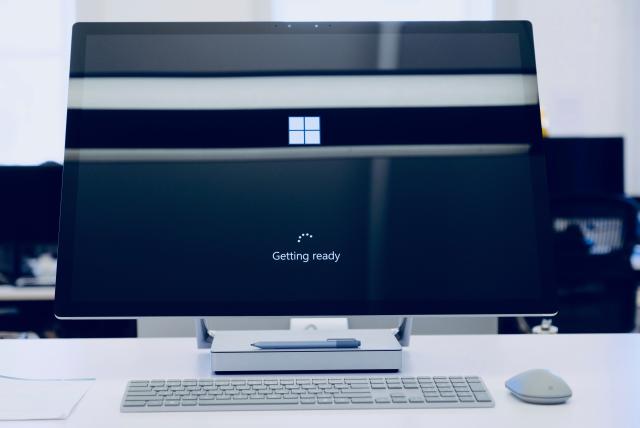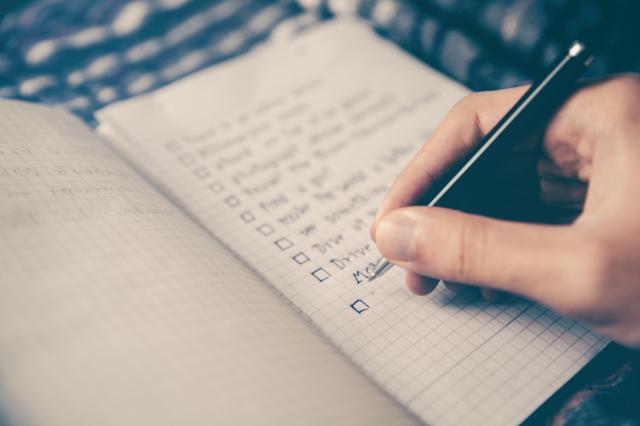By Liz Jones
If you’ve focused on proofreading until now, the idea of copyediting can seem daunting. For a start, you’ll probably be working on a Word document rather than a PDF or paper proofs, which means you’ve got far more freedom to make changes. But are you qualified to do the work? How sweeping should your changes be? And how can you tell the difference between what needs to be changed, and what can be left alone? Here are some tips for coping with that first copyediting job.
 1. Don’t panic!
1. Don’t panic!
First, take a deep breath. You’ve got this. Proofreading and copyediting are on the same continuum – it’s all editing, just at a different stage of the process and therefore with a different emphasis. Copyediting is about preparing the raw text for layout, rather than applying the final polish before publication. (That said, you want the copyedited text to be as clean as possible.) For copyediting, just as for proofreading, it can help to approach the work by considering what can stay the same, rather than what needs to change. The author’s preferences are a good place to start, and if you’re working for a publisher, their style sheet can offer useful guidance on many editorial decisions.
2. Read the brief.
This is your best clue to how much you need to intervene. What is the client expecting? A publisher might offer very clear instructions on the extent and scope of the work, and how much they would like you to change (or not). But what if there is no brief? If you’re working for a self-publisher or a non-publishing business client, the brief might be open-ended or even non-existent. In this case, you need to put yourself in the shoes of the reader. Your job as copyeditor is to remove barriers to understanding the text, and make it ready for publication. Consistency, clarity and accuracy are key. Take a look at the CIEP’s FAQs on copyediting for more tips.
3. Assess the work.
You wouldn’t start to build a house without a plan, would you? (Well, I hope you wouldn’t.) It’s probably a smaller job, but likewise you shouldn’t start a copyedit before you’ve assessed the scope of the work. When you quoted for the job, you will have looked at what it involves and should have a good idea of the time it will take. But before you start the edit look again, and more closely. Work out a plan of action. How will you order the necessary tasks? Can you figure out the most efficient way to complete the work to a high standard? (This is crucial if you’re being paid a flat fee.) It can be tempting to get stuck in right away, but a little forward planning can save a lot of time later on. You might also identify problems you need to discuss with the client, such as missing material or a heavier-than-expected level of editing.
A good way to get an overview of the whole document before you start editing in detail is to style the headings first. (It’s also all too easy to miss mistakes in headings when you’re immersed in the main text.)
4. Clean up the text.
Assessing the text (see tip 3) will have given you a good idea of the tasks that can be batched and automated. Lots of editors choose to run PerfectIt at the start of a job, for example, to highlight inconsistencies. Macros (such as those by CIEP member Paul Beverley) can also help you identify things that need editing, and make the necessary changes more efficiently. Cleaning up the text before you start the language editing can help you focus on flow and readability with fewer distractions.
5. Build a style sheet.
One of the key tasks of a copyeditor (aside from actually editing the text) is compiling a style sheet – either starting from scratch, or adding to the one supplied with the job. This helps you as you progress through the edit, providing a point of reference for all the editorial decisions you make. It also helps the client, and eventually the proofreader, so they can understand your working and hopefully won’t arbitrarily undo your editorial decisions.
 6. Consider working on the references first.
6. Consider working on the references first.
If the document you’re editing has a lot of references (and it might not!), it can help to work on these first. There are several reasons for this. First, this is another way of gaining insight into the main text before you start to read and edit it in earnest. Second, the references need to be consistent, so editing them all together can be more effective than dealing with them as they arise in relation to the main text. Finally, they can take a surprisingly long time to sort out, especially if you need to check them for accuracy and tidy up formatting. If you’ve got them sorted before you start the main bulk of the editing, you don’t need to worry about spending an unexpectedly long time on them at the end of the job.
7. Work through the text in order.
Although I know plenty of copyeditors who adore references (!), for me this is the fun part. Read through the whole of the text, and make edits as you go to ensure it is consistent, clear and accurate – as in tip 2. It’s a skilful balance between knowing when to leave things alone, and when to tweak things to improve the flow of a sentence, or to help the author express themselves more effectively. Question (almost) everything – but don’t spend too long doing it.
Some questions arise: What is the copyeditor’s responsibility, and what is not? How many times should the copyeditor read the text? The answer is usually ‘it depends’ – on the brief, on the budget, and on the schedule. Keep track changes switched on (unless your client’s specified otherwise), and be careful not to change the meaning of the text. If something’s ambiguous, query it. If a change is unarguable, and can be justified, go for it with confidence. You’ve been hired for your expertise, and your ability to interpret the client’s needs.
8. Query sensibly and clearly.
How you present your queries might be specified in the brief. You might write them as comments on the Word document, or as a separate list, or both. However you present them, try to ensure they are worded clearly, and politely. It can be tricky knowing what to query, but generally you will want to defer to the author on matters of fact or content that you can’t easily check and verify. If a meaning isn’t clear, this will also need to be queried. You might also flag up editorial changes where they deviate from the author’s preferred style to explain why you did something (such as changing gendered pronouns in favour of singular they/their). For more about querying, see the CIEP’s fact sheet.
9. Carry out a final check for consistency.
Many editors run PerfectIt again at this stage, which can help you weed out straggling inconsistencies. But how many times should you actually read the text? If I’m being paid enough, I read everything twice. Once for the edit, then once to check over what I’ve done. I often find things to improve on this second pass. However, if there isn’t the time or the budget to support an entire second read, I would certainly check over all my corrections to make sure I haven’t introduced typos or other inaccuracies.
Also, check your queries. By the time you finish editing, you might find that some of the answers are clear and don’t need to be referred back to the author.
10. Return the edited document(s) with care.
Don’t rush the return: get things in order, check the brief again to make sure you’ve dealt with everything, and make sure your covering email is informative and clear. As well as the edited text, send your queries and style sheet. Let the client know they can ask you if they have any questions about what you’ve done. Once you’ve submitted everything, invoice promptly, put the kettle on and look forward to the next copyedit! All jobs are different, but your confidence and efficiency will increase with each one.
 Liz Jones has been an editor since 1998, and freelance since 2008. She specialises in copyediting and proofreading non-fiction, specialising in architecture, art and other practical subjects, as well as highly technical material. She is one of the CIEP’s information team, and is also a mentor in proofreading and copyediting.
Liz Jones has been an editor since 1998, and freelance since 2008. She specialises in copyediting and proofreading non-fiction, specialising in architecture, art and other practical subjects, as well as highly technical material. She is one of the CIEP’s information team, and is also a mentor in proofreading and copyediting.
Photo credits: Getting ready – Johny vino; planning – Glenn Carstens-Peters, both on Unsplash
Proofread by Joanne Heath, Entry-Level Member.
Posted by Abi Saffrey, CIEP blog coordinator.
The views expressed here do not necessarily reflect those of the CIEP.

Great article, Liz. You forgot to mention the feeling of security that copy-editors have knowing that any howlers that have been missed will be caught by our fabulous proofreaders!